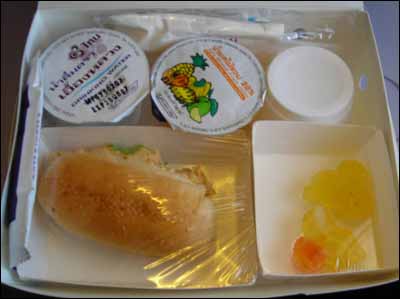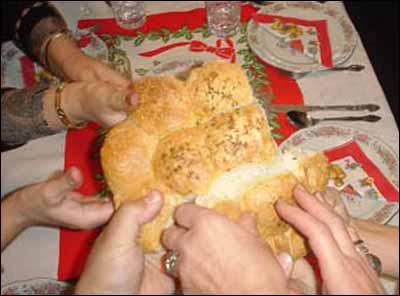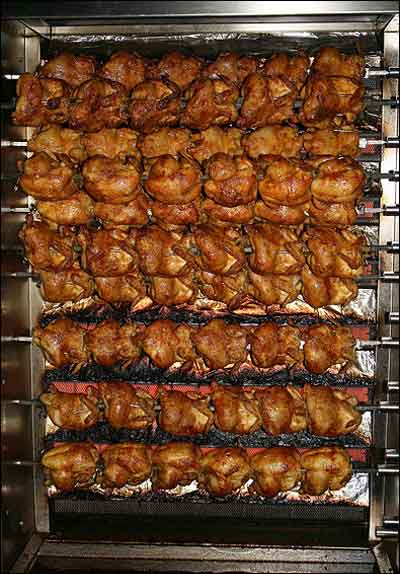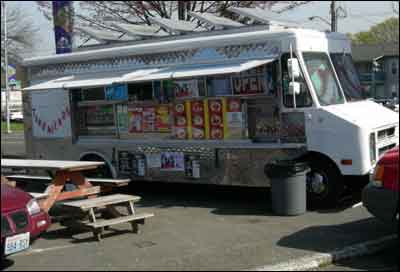Most people don't know anything about planning. Sure, they may understand the general gist of it, but many planning concepts just haven't yet made it into the public consciousness. In an effort to accelerate the education of the public, here's an easy-to-use pictorial guide that relates some of those not-so-familiar planning concepts to something we're all familiar with: food.
Most people don't know anything about planning. Sure, they may understand the general gist of it, but many planning concepts just haven't yet made it into the public consciousness. In an effort to accelerate the education of the public, here's an easy-to-use pictorial guide that relates some of those not-so-familiar planning concepts to something we're all familiar with: food.
Here's a few examples of some planning concepts made more accessible through food-based analogies.
General Plan - The basic framework for making and maintaining a city.

Zoning - The land-use regulations that dictate which uses go where. Often creates a separation between development types.

Mixed Use Development - Integration of different land use types in the same area.

High Density - The concentration of more people, developments and land uses in smaller areas.

Eminent Domain - The taking of private land by the government for the benefit of the community.

Sprawl - Expansive development beyond the urban fringe, occupying huge amounts of land.

Adaptive Reuse - The redevelopment of an area or a property into a new land use type for which it was not originally intended.

Infrastructure (Ideal) - The backbone of cities, consisting of essential services such as water piping, sewage disposal, energy transmission, roads and transit, and other core services that operate efficiently and in a well-maintained fashion.

Infrastructure (Actual) - The real state of the city's essential services: undermaintained, insufficient and out of date.

Blight - Properties of degraded or lower physical qualities that bring down the quality of the immediate surrounds.

Infill Development - New development built to replace underperforming or abandoned properties in existing high density urban areas.

Affordable Housing (Projects Style) - Large, high density public housing projects offering low- and no-frills affordable housing in dense urban areas.

Affordable Housing (Modern Style) -
Architecturally-experimental housing built for low-income residents -- often in garish and gaudy colors -- meant to help the low-income better fit in with their neighbors and to downplay the stigma associated with public housing.

McMansion - A grossly oversized home.

High Rise Buildings - Tall or skyscraping buildings typically found in dense urban areas and central business districts.

Historic Preservation - The practice of identifying, renovating, and preserving properties and places of historic value.

Transit Oriented Development - Development that is located adjacent or near to public transportation lines and stations.

Garden City - Master-planned communities surrounded by greenbelts that were part of the late-18th Century Garden City Movement founded by Ebenezer Howard.

Design Charrette - A participatory planning exericse that brings community members and design professionals together to collaborate on city design.

Form-Based Codes - Guidelines that regulate the aesthetic features of new developments.

Dedicated Lanes - Street lanes that are set aside from car traffic for exclusive use by modes such as bus rapid transit or bicycles.

Green Roofs - Integration of organic and living substances on the roofs of buildings.

Tax Incentives - Perks and tax breaks provided by cities to developers based on the prediction that whatever they develop will generate an economic benefit to the city greater than what was provided as the incentive.

--
OK, well some of those were a little bit of a stretch, but the basic principles are there. In fact, they're all around. So if you're having trouble wrapping a non-planner's noggin around some obscure concepts, skip the jargon and open your fridge.
All images courtesy Wikimedia Commons (except General Plan by Flickr user Nate Steiner, and McMansion by Flickr user Russell).

Analysis: Cybertruck Fatality Rate Far Exceeds That of Ford Pinto
The Tesla Cybertruck was recalled seven times last year.

National Parks Layoffs Will Cause Communities to Lose Billions
Thousands of essential park workers were laid off this week, just before the busy spring break season.

Retro-silient?: America’s First “Eco-burb,” The Woodlands Turns 50
A master-planned community north of Houston offers lessons on green infrastructure and resilient design, but falls short of its founder’s lofty affordability and walkability goals.

Test News Post 1
This is a summary

Analysis: Cybertruck Fatality Rate Far Exceeds That of Ford Pinto
The Tesla Cybertruck was recalled seven times last year.

Test News Headline 46
Test for the image on the front page.
Urban Design for Planners 1: Software Tools
This six-course series explores essential urban design concepts using open source software and equips planners with the tools they need to participate fully in the urban design process.
Planning for Universal Design
Learn the tools for implementing Universal Design in planning regulations.
EMC Planning Group, Inc.
Planetizen
Planetizen
Mpact (formerly Rail~Volution)
Great Falls Development Authority, Inc.
HUDs Office of Policy Development and Research
NYU Wagner Graduate School of Public Service

























